How to beat Candy Crush Saga
- Transfer
King's Candy Crush Saga is at the top of the chart for the most profitable apps thanks to several key features. The game is extremely accessible, because you can play the game both online and offline. She has a low entry barrier and playing to the fullest uses virality. The graphics and sound in the game are beautiful and extremely attractive. It is also impossible not to mention the progress on the basis of the map, which provides players with the relevance of the game even if they play it once a year. So how can you surpass this game?
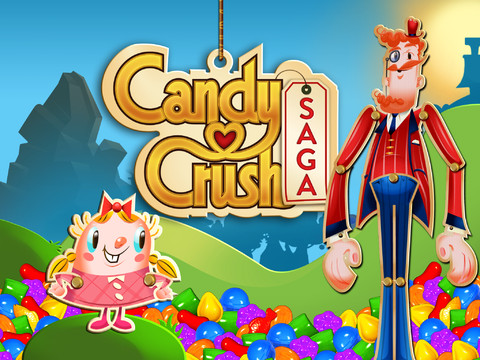
Game mechanics
CCS economics are based on energy consumption. Players consume one heart (energy) each time they fail and start the level anew. As soon as the players run out of hearts, they have three options for further actions: wait, ask or buy them. Players return to the game with the help of a timer (wait until energy is replenished) and virality, which I will describe in the corresponding section of this article.
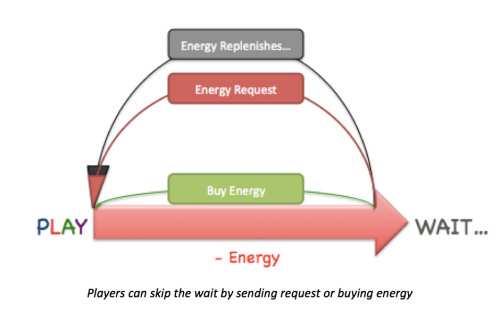
An overabundance of meaningful virality
Initially, CCS was developed as a game for Facebook, and although it was completely rewritten for mobile devices, its social roots are very noticeable - especially in terms of how easy it is to share and request. It seems that most players even allow CCS to post Facebook posts on their behalf.
The virality of CCS consists of two main aspects: collaboration and rivalry. Players interact by exchanging hearts and helping each other gain access to paid levels. On the other hand, rivalry is shown on the progress screen, which is based on a map, and a leaderboard based on levels.
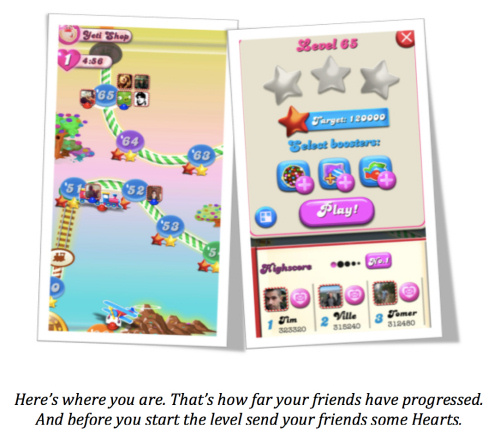
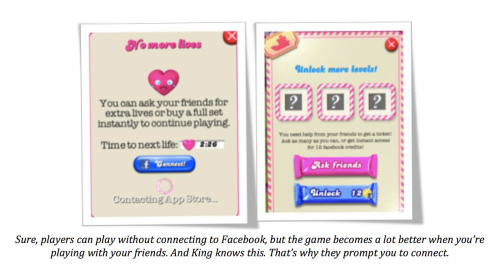
At first glance, CCS seems to be an application that is trying its best to spam a player. But in fact, their approach to virality is thoroughly thought out. First of all, virality plays a key role in the mechanics of the game and replaces premium currency. Secondly, CCS virality is always (or almost always) valuable at both sharing and click levels. Thirdly, the possibility of cooperation is well thought out in CCS, since helping a player makes it possible to see his progress. In other words, CCS creates a competitive spirit through collaboration.
Sharing Value:
Clicks Value:
The rivalry is caused by:
Low prices and big income
. CCS has no premium currency. Players cannot buy whole sets of resources. The most expensive purchase a player can make is $ 39.99, and this purchase can be made only once. In fact, most of the purchases in the game are the purchase of additional moves and hearts that cost $ 0.99. However, despite all these limitations, CCS is well monetized with three categories of purchases: permanent boosters, expendable boosters, and a pay-to-continue system.
Permanent Accelerators
A player can purchase three different permanent boosters. These accelerators are sold in the game store and there is literally no advertising in it designed to promote their distribution. For me, this is a sign that these accelerators are not selling well and / or they screwed up with the retention and monetization of the players who purchased them (the game may seem too easy for players who purchased permanent accelerators).
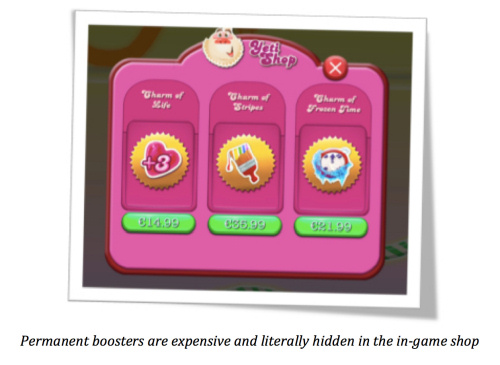
Consumable Boosters
Before starting a level, players can purchase three different types of consumable boosters that can help players make a quick jump at the start. These consumable boosters open as they progress and vary depending on the level (for example, in levels at a speed, accelerators differ from accelerators in levels based on the number of moves).
Consumable boosters are offered to players while familiar with the mechanics of the game. When a new bonus opens, the player can try it for free in order to learn how to use the bonuses and understand how they can help pass the level.
Pay to continue
The main part of CCS's profit comes from micro transactions, through which players buy hearts, extra moves and unlock new levels. The constant demand for these purchases creates a need for progress and well-designed bonus points.
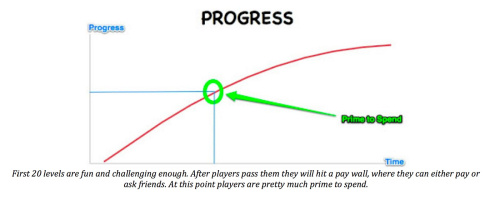
Improve and simplify
So how do you outperform CCS? Well, first of all you have to simplify everything. Compared to similar games like Zynga's Bubble Safari, CCS is much simpler. There are no experience points or player levels. Also, there is neither a simple nor a premium currency. The in-game store does not advance in any way and boasts only three names of goods. I think that this simplicity also encourages users to play and pay.
Secondly, you should introduce low rates and convince your players to spend this dollar. Personally, I noticed that when players who usually avoid shopping within the application notice expensive products inside the game store, they become very careful, because clicking the wrong button will cost them $ 20. But, when the same players are surrounded by goods ranging in price from $ 1 to $ 3, they feel more comfortable and make several purchases at a time (that is, they act the same as when they are in the AppStore).
In my opinion, the success of CCS is based on the excellent integration of virality (collaborate and compete), the emphasis on progress (pay to continue), flexible pricing (very cheap disposable items) and, of course, excellent gameplay, accompanied by excellent graphics. Can you do better? It will not be easy.

Game mechanics
CCS economics are based on energy consumption. Players consume one heart (energy) each time they fail and start the level anew. As soon as the players run out of hearts, they have three options for further actions: wait, ask or buy them. Players return to the game with the help of a timer (wait until energy is replenished) and virality, which I will describe in the corresponding section of this article.

An overabundance of meaningful virality
Initially, CCS was developed as a game for Facebook, and although it was completely rewritten for mobile devices, its social roots are very noticeable - especially in terms of how easy it is to share and request. It seems that most players even allow CCS to post Facebook posts on their behalf.
The virality of CCS consists of two main aspects: collaboration and rivalry. Players interact by exchanging hearts and helping each other gain access to paid levels. On the other hand, rivalry is shown on the progress screen, which is based on a map, and a leaderboard based on levels.


At first glance, CCS seems to be an application that is trying its best to spam a player. But in fact, their approach to virality is thoroughly thought out. First of all, virality plays a key role in the mechanics of the game and replaces premium currency. Secondly, CCS virality is always (or almost always) valuable at both sharing and click levels. Thirdly, the possibility of cooperation is well thought out in CCS, since helping a player makes it possible to see his progress. In other words, CCS creates a competitive spirit through collaboration.
Sharing Value:
- Instrumental: The feed is the result of rewards, or is encouraged by the hope of rewards if another player responds - requests for help unlocking further levels in CCS are great examples
- Hedonic: A feed allows you to demonstrate personal accomplishments and / or productivity
- Socially conditioned: The feed seeks cooperation, promising mutual benefits, or social gestures in the form of partnerships or investments.
- Altruistic: The flow provides an increased sense of self-esteem when you give something away for free or provide selfless help
Clicks Value:
- Encouragement: The player's response to requests is encouraged; immediate promises or progress promised
- Provocation: The feed provokes a return to the game using the spirit of competition (take revenge!), Empathy (save the panda!) Or curiosity (Jack just earned a million dollars!)
- Social commitment: The feed encourages reciprocal social gestures (gifts, help), or the social connections that they represent (Linda invested in you; New buildings appeared in Jim. Thanks to everyone who helped!)
The rivalry is caused by:
- Friends visiting each other’s play areas (these visits may be subject to quests or rewards for such visits)
- Leaderboard (How many levels did Jason get ahead of me?)
- The desire to boast (I finished Building X!)
- Requests that show how much the player has progressed in the game (Help me defeat Enemy Y!)
Low prices and big income
. CCS has no premium currency. Players cannot buy whole sets of resources. The most expensive purchase a player can make is $ 39.99, and this purchase can be made only once. In fact, most of the purchases in the game are the purchase of additional moves and hearts that cost $ 0.99. However, despite all these limitations, CCS is well monetized with three categories of purchases: permanent boosters, expendable boosters, and a pay-to-continue system.
Permanent Accelerators
A player can purchase three different permanent boosters. These accelerators are sold in the game store and there is literally no advertising in it designed to promote their distribution. For me, this is a sign that these accelerators are not selling well and / or they screwed up with the retention and monetization of the players who purchased them (the game may seem too easy for players who purchased permanent accelerators).

Consumable Boosters
Before starting a level, players can purchase three different types of consumable boosters that can help players make a quick jump at the start. These consumable boosters open as they progress and vary depending on the level (for example, in levels at a speed, accelerators differ from accelerators in levels based on the number of moves).
Consumable boosters are offered to players while familiar with the mechanics of the game. When a new bonus opens, the player can try it for free in order to learn how to use the bonuses and understand how they can help pass the level.
Pay to continue
The main part of CCS's profit comes from micro transactions, through which players buy hearts, extra moves and unlock new levels. The constant demand for these purchases creates a need for progress and well-designed bonus points.

Improve and simplify
So how do you outperform CCS? Well, first of all you have to simplify everything. Compared to similar games like Zynga's Bubble Safari, CCS is much simpler. There are no experience points or player levels. Also, there is neither a simple nor a premium currency. The in-game store does not advance in any way and boasts only three names of goods. I think that this simplicity also encourages users to play and pay.
Secondly, you should introduce low rates and convince your players to spend this dollar. Personally, I noticed that when players who usually avoid shopping within the application notice expensive products inside the game store, they become very careful, because clicking the wrong button will cost them $ 20. But, when the same players are surrounded by goods ranging in price from $ 1 to $ 3, they feel more comfortable and make several purchases at a time (that is, they act the same as when they are in the AppStore).
In my opinion, the success of CCS is based on the excellent integration of virality (collaborate and compete), the emphasis on progress (pay to continue), flexible pricing (very cheap disposable items) and, of course, excellent gameplay, accompanied by excellent graphics. Can you do better? It will not be easy.
Only registered users can participate in the survey. Please come in.
Did you spend money at Candy Crush Saga?
- 3.1% Yes 15
- 47.8% No 230
- 49% Didn't Play 236
